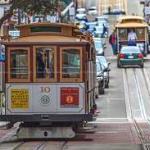 Last Tuesday the Bureau of Labor Statistics reported the Consumer Price Index increased 0.4 percent in May and 2.1 percent over the last 12 months. That means if you didn’t get a 2 percent raise this year you’re doing worse – not better – than last year. But not to worry…
Last Tuesday the Bureau of Labor Statistics reported the Consumer Price Index increased 0.4 percent in May and 2.1 percent over the last 12 months. That means if you didn’t get a 2 percent raise this year you’re doing worse – not better – than last year. But not to worry…
The following day, Federal Reserve Chair Janet Yellon dismissed the CPI report…calling the data “noisy.” Obviously, she missed the announcement from In-N-Out – the iconic California hamburger stand – that they’re raising prices because of the soaring cost of dairy and beef. Is this noise too?
Perhaps in Yellon’s world – a place where the polar vortex is the root cause of lethargic GDP – it is. For the rising cost of dairy and beef is due to the epic California drought. Somehow, according to the top Fed head, these price hikes are all just noise.
We don’t quite comprehend how the Fed figures what’s noise or not. In our world, higher prices are higher prices. As for the California drought, we took a drive through ground zero on Sunday.
What follows are some anecdotes and reflections…including a connection between the parched agricultural fields and the Fed’s cheap credit.
Economic and Agricultural Stimulus
Dropping down the backside of the grapevine from the Tejon Pass, along Interstate 5 between Los Angeles and San Francisco, one is greeted by an endless sea of agricultural fields. The farms of California’s San Joaquin Valley are not 160-acre family homestead farms rooted in the 19th century nor are they in the yeoman farmer tradition envisioned by Thomas Jefferson. They are large-scale, highly productive, corporate crop producers.
While these massive agricultural operations are quite a sight, what’s more incredible is that they even exist at all. Given the natural resources of the area, the possibility for anything – aside from cactus and scrub – to grow here is a miracle.
“The southern part of the valley was a barren desert waste with scattered saltbush when first viewed by Don Pedro Fages in 1772 coming from the south over Tejon Pass,” wrote University of California Berkeley Professor Emeritus, James Parson. “Less than five inches of rain annually falls in southwestern Kern County, maybe ten inches at Fresno. Pan evaporation in a summer month on the west side pushes 20 inches.”
Still, a barren desert waste and parched conditions didn’t stand in the way of what was to come. For with a little imagination, subsidized water, and cheap migrant field workers, mankind was able to create what “has been called ‘The world’s richest agricultural valley,’ a technological miracle of productivity.”
Unfortunately, endlessly dumping chemical fertilizers, pesticides and herbicides, and imported water, is not without consequences. What has stimulated the productive miracle of the San Joaquin Valley over the last century is the same blend of factors that has propped up American financial markets, and government debt, over the last half century…namely, cheap credit and excess liquidity.
The Paradox of Fed Credit
For example, in the San Joaquin Valley, vast irrigation networks convey water thousands of miles to make the desert bloom. But as surface water is conveyed along the open California aqueduct it becomes saltier. And as it’s applied for irrigation, the residual salts collect in the soil.
After decades of this, the salt in the soil has built up so that it strangles the roots of the plants. To combat this, over-watering is required because the irrigation water – while salty – is fresher than the salt encrusted soil. By applying excess irrigation water, the soils around the plants are temporarily freshened up so that crops can grow. Yet, at the same time, this over-watering accelerates the mass quantity of salt being applied to the soil.
In this grand paradox, the freshness of the excess water that’s keeping the farmland alive is the source of the salt that’s killing it.
So, too, goes the U.S. economy. After six years of rapidly expanding their balance sheet and pumping cheap credit and excess liquidity into financial markets the Federal Reserve has surfaced a similar paradox.
They must keep expanding the money base to keep the economy afloat…but in doing so they’ll ultimately kill it. Our guess is the Fed won’t get serious about turning until the market forces them too. By then they’ll have lost any remaining control they still hold. As for the San Joaquin Valley, the drought may just be a temporary problem. However, after the soil’s salted over, once arable land will lay fallow for eternity.
Postscript
Today we’re in San Francisco working, observing, writing and taking pause with our family to ride cable cars up and down Powell Street, traverse through the city’s varying districts – like Chinatown, North Beach, SoMa, Sunset, Marina, and Fisherman’s Warf – and eat fresh crab and pasta. But before we get back to it, we’ll leave you with a little Frank Sinatra…and an ode to this unique American city…
I left my heart in San Francisco
High on a hill it calls to me
To be where little cable cars climb halfway to the stars
The morning fog may chill the air, I don’t care
My love waits there in San Francisco
Above the blue and windy sea
When I come home to you, San Francisco
Your golden sun will shine for me
Sincerely,
MN Gordon
for Economic Prism




